New South Wales
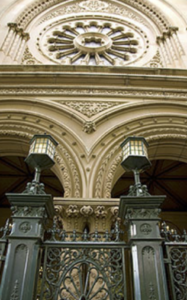 The first Jews to come to Australia were at least eight English convicts transported to Botany Bay in 1788 aboard the First Fleet. About 15,100 convicts were transported by the time transportation ceased in 1840 in New South Wales and 1853 in Tasmania. It is estimated that of those who arrived by 1845 about 800 were Jewish. Most of them came from London, were of working-class background and were male. Only 7% of Jewish convicts were female, compared with 15% for non-Jewish convicts. The average age of the Jewish convicts was 25, but ranged from 8 to elderly.
The first Jews to come to Australia were at least eight English convicts transported to Botany Bay in 1788 aboard the First Fleet. About 15,100 convicts were transported by the time transportation ceased in 1840 in New South Wales and 1853 in Tasmania. It is estimated that of those who arrived by 1845 about 800 were Jewish. Most of them came from London, were of working-class background and were male. Only 7% of Jewish convicts were female, compared with 15% for non-Jewish convicts. The average age of the Jewish convicts was 25, but ranged from 8 to elderly.
Beginning in the 1820s, Jewish pioneers, established the foundations of congregational life and consecrated cemeteries and places of worship in what are now the chief urban centres of Australia. In 1828 merchant Phillip J. Cohen convened regular religious services at his Sydney home, and superintended the formal establishment of the Sydney Hebrew Congregation in 1832. The first synagogue in Australia was opened in rented premises in Bridge Street, Sydney, five years later and a permanent building was subsequently consecrated in York Street. The Sydney Hebrew Congregation has worshipped at the Great Synagogue in Elizabeth Street since 1877.
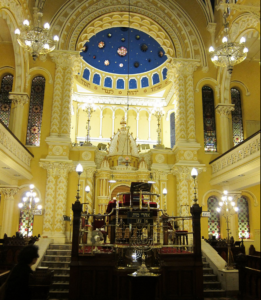 The first move toward organisation in the community was the formation of a Chevra Kadisha (a Jewish burial society) in Sydney in 1817, but the allocation of land for a Jewish cemetery was not approved until 1832. In 1830 the first Jewish wedding in Australia was celebrated, the contracting parties being Moses Joseph and Rosetta Nathan. In 1878 the Great Synagogue, Sydney, was consecrated with Rev. A.B. Davis as its first minister.
The first move toward organisation in the community was the formation of a Chevra Kadisha (a Jewish burial society) in Sydney in 1817, but the allocation of land for a Jewish cemetery was not approved until 1832. In 1830 the first Jewish wedding in Australia was celebrated, the contracting parties being Moses Joseph and Rosetta Nathan. In 1878 the Great Synagogue, Sydney, was consecrated with Rev. A.B. Davis as its first minister.
During the 19th century a high proportion of Jews in NSW lived in country areas, with communities in Goulburn, Maitland and Grafton, and later in Newcastle and Broken Hill. These communities were too isolated and today the only reminder of their existence is the Jewish gravestones in country cemeteries and disused synagogues, apart from the Newcastle Synagogue which continues to function. It was the Jewish refugees from Central Europe in 1938-1939, escaping from Nazism, who laid the basis for the dramatic changes and evolution of Sydney Jewry and a large number of suburban synagogues being established.
The Gold Rush of the 1850s attracted a sizable number of Jewish immigrants. Between 1851 and 1861 the Jewish community almost tripled to 5,486. By 1901 the Jewish population exceeded 15,000, the majority from Britain.
Waves of immigrants from Hungary in the mid-1950s, South Africa, Russia and Israel in the 1970s and 1980s have enriched the community which today includes about 30 Orthodox synagogues, four Progressive synagogues and five Jewish day schools (Masada College, Moriah College, Mount Sinai College, Emanuel School and Kesser Torah College). The Jewish community in Sydney currently numbers about 50,000 people.
Tasmania
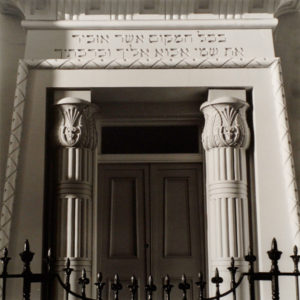 The first organised services in Van Diemen’s Land (Tasmania) were convened at the Argyle Street, Hobart home of wealthy emancipist Judah Solomon in 1830. A house of worship was constructed, on land donated by Solomon, in 1845. In the 1840s, there were sufficient numbers and prospered sufficiently to enable the building of synagogues in Hobart Town (1845) and Launceston (1846). The first Jewish minister was appointed in 1846, and religious practices were established.
The first organised services in Van Diemen’s Land (Tasmania) were convened at the Argyle Street, Hobart home of wealthy emancipist Judah Solomon in 1830. A house of worship was constructed, on land donated by Solomon, in 1845. In the 1840s, there were sufficient numbers and prospered sufficiently to enable the building of synagogues in Hobart Town (1845) and Launceston (1846). The first Jewish minister was appointed in 1846, and religious practices were established.
The 1848 census recorded 435 Jews in Tasmania, the highest number of Jews recorded for Tasmania. Numbers declined as some settlers returned to England, and others left for mainland colonies and New Zealand. The Launceston Synagogue closed in 1871. The Hobart Hebrew Congregation continued its communal life. Though there was no minister in the periods 1873–1911 and 1922–1942, Sabbath services were conducted by members. European refugees arriving from 1938 rejuvenated the Jewish community in Tasmania. Ministers were appointed from 1943, but from 1956 members were again required to conduct services.
The Tasmanian community reached a low point in the early 1970s when the census recorded fewer than 100 Jews in Hobart, but since then it has rebounded to be 248 Jews in 2016.
Victoria
 Jewish services were initiated in Melbourne for the 1839 High Holy days. The Melbourne Hebrew Congregation was founded two years later, and the first Melbourne synagogue was constructed in Bourke Street in 1848. Within little more than a generation, two further permanent synagogues, at East Melbourne and suburban St Kilda, reflected the growth and geographical spread of Melbourne Jewry.
Jewish services were initiated in Melbourne for the 1839 High Holy days. The Melbourne Hebrew Congregation was founded two years later, and the first Melbourne synagogue was constructed in Bourke Street in 1848. Within little more than a generation, two further permanent synagogues, at East Melbourne and suburban St Kilda, reflected the growth and geographical spread of Melbourne Jewry.
The East Melbourne Hebrew Congregation, an Orthodox synagogue, is the oldest synagogue in the city; in fact, it had been established 20 years prior to its official consecration in 1877, following its separation from the Melbourne Hebrew Congregation. Another historic synagogue is Temple Beth Israel. Established in 1939, it is the oldest liberal or Reform congregation in Australia. At the center of Melbourne’s Sephardi community is the Sassoon Yehuda Synagogue. The congregation was founded in 1977 by a handful of members of the Sephardi community, the majority of whom came from Egypt. Services were conducted in a small house on Darling Road which had been converted for Jewish prayer services until 1990, when the Sephardi Association of Victoria purchased property at its on Hotham Street in East Kilda. The building is recognized for its Moorish architectural design.
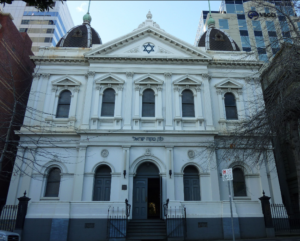 Immigration to Australia as a whole continued steadily throughout the 1920s-30s with an influx of migrants from Palestine and Europe, where Jews were experiencing a rise in anti-Semitism. Since the 1940s, Melbourne has welcomed several waves of Jewish immigrants from around the world, including Holocaust survivors from Europe and Sephardim from North Africa and the Middle East. In the years following World War II, Jews once again arrived in Australia from Europe and from Shanghai, where a number of Jews had found shelter during the war. Between 1950 and 1970, Sephardi Jews primarily from Cairo, Baghdad, and Damascus, as well as Jews from Hungary made their way to Australia. More recently, Jews have come to Australia from Israel, South Africa, and Russia. During the 1990s, Melbourne experienced a significant influx of Jews from South Africa and the former Soviet Union. There is also a small community of Jews from Israel.
Immigration to Australia as a whole continued steadily throughout the 1920s-30s with an influx of migrants from Palestine and Europe, where Jews were experiencing a rise in anti-Semitism. Since the 1940s, Melbourne has welcomed several waves of Jewish immigrants from around the world, including Holocaust survivors from Europe and Sephardim from North Africa and the Middle East. In the years following World War II, Jews once again arrived in Australia from Europe and from Shanghai, where a number of Jews had found shelter during the war. Between 1950 and 1970, Sephardi Jews primarily from Cairo, Baghdad, and Damascus, as well as Jews from Hungary made their way to Australia. More recently, Jews have come to Australia from Israel, South Africa, and Russia. During the 1990s, Melbourne experienced a significant influx of Jews from South Africa and the former Soviet Union. There is also a small community of Jews from Israel.
Most of Melbourne’s Jewish community lives in distinctly Jewish areas within close proximity to Jewish institutions. The community is largely concentrated in the areas of Caulfield and St. Kilda. Carlisle Street in East St. Kilda is considered the ‘main-street’ of the Jewish community and is a well-known tourist district.
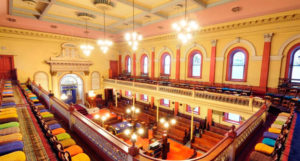 The most populous Jewish neighborhood in the city is Caulfield North. At an estimated 10,200 people, Jews make up one third of the neighborhood’s total population and account for nearly 10% of all Jews in Australia. Approximately 20% of Melbourne’s Jews live in the northeastern suburbs of Doncaster and Kew. The suburb of Balaclava resides the largest enclave of Orthodox Jews in Melbourne.
The most populous Jewish neighborhood in the city is Caulfield North. At an estimated 10,200 people, Jews make up one third of the neighborhood’s total population and account for nearly 10% of all Jews in Australia. Approximately 20% of Melbourne’s Jews live in the northeastern suburbs of Doncaster and Kew. The suburb of Balaclava resides the largest enclave of Orthodox Jews in Melbourne.
The Jews of Melbourne are mostly of Polish background and Yiddish is still widely spoken by the Jewish community. The Shalom Aleichem College offers the opportunity to connect with the Yiddish language and culture through its many educational and cultural programs.
One of the most notable features of Jewish life in Melbourne is its Jewish education system. In addition to congregation-based Jewish educational programming, Melbourne has many Jewish day schools, colleges, and education centers. Pre-school programs are offered at Abeles Liberman Pre-School, the Early Learning Center at Bialik College and The King David School. There are ten or more Jewish day schools, including Adass Israel School, Bentleigh Jewish Day School, and The King David School. The city’s Jewish colleges include the Beth Rivka Ladies College, Bialik College, Yeshiva College, Mt Scopus Memorial College, Leibler Yavneh College and Shalom Aleichem College.
South Australia
 The Jewish contribution to South Australia began with the appointment in 1834 of Jacob Montefiore to the Colonization Commission. The first Jewish settler was possibly John Levey, who arrived in September 1836. He was followed two months later by Philip Lee, a licensed victualler, who helped found the Adelaide Hebrew Congregation in 1848. Jewish colonists, mainly from England, established a synagogue in Adelaide in 1850, a cemetery in 1852 and religious classes in 1862.
The Jewish contribution to South Australia began with the appointment in 1834 of Jacob Montefiore to the Colonization Commission. The first Jewish settler was possibly John Levey, who arrived in September 1836. He was followed two months later by Philip Lee, a licensed victualler, who helped found the Adelaide Hebrew Congregation in 1848. Jewish colonists, mainly from England, established a synagogue in Adelaide in 1850, a cemetery in 1852 and religious classes in 1862.
Abraham Tobias Boas, arrived in 1870 to serve as rabbi. With his arrival, the consecration of a new synagogue in 1871, and a population of 435, South Australian Jewry had developed the infrastructure required for survival. By 1891, the Jewish population had increased to 840.
After Rabbi Tobias Rafalowicz’s appointment to minister to the Adelaide Hebrew Congregation in 1963 a kindergarten was established in 1972; and a day school, Masada College in Walkerville, in 1976. In 1990, the Congregation’s present synagogue in Flemington Road, Glenside, was completed and Masada College relocated to the same grounds. In 2000, the college had over 100 students.
Queensland
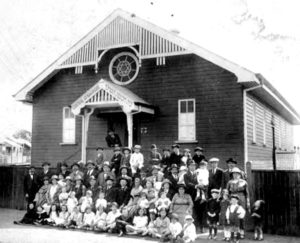 The first record of Jewish settlement in Queensland was around the same time as the colony of Queensland separated from New South Wales in 1859. Several Jewish families left Sydney to settle in Queensland and on Sunday 5 March 1865 the first communal meeting was held to start the establishment of a formal congregation and place of Jewish worship in Brisbane. At that time, Reverend Joseph E. Myers was the first Minister and he established the first Hebrew school at Mrs Jewell’s residence in Tank Street in central Brisbane.
The first record of Jewish settlement in Queensland was around the same time as the colony of Queensland separated from New South Wales in 1859. Several Jewish families left Sydney to settle in Queensland and on Sunday 5 March 1865 the first communal meeting was held to start the establishment of a formal congregation and place of Jewish worship in Brisbane. At that time, Reverend Joseph E. Myers was the first Minister and he established the first Hebrew school at Mrs Jewell’s residence in Tank Street in central Brisbane.
In 1865 Jonas Myer Myers, a cousin of Rev. Joseph Myers became the congregation’s second Minister and served Judaism in Brisbane for a total of 43 years. On 19th of March that year, the Brisbane Hebrew Congregation was properly formed in a temporary synagogue in Bulcock’s building in Queen Street, Brisbane.
In 1877, the congregation moved from the Synod Hall to the Masonic Temple in Ann Street in the centre of Brisbane. Finally, an allotment in Margaret Street was earmarked as the proposed site of the Brisbane Synagogue in 1885, with the foundation stone laid on July 7th of that year. One year later, on the 18th of July 1886, the Brisbane Synagogue building was completed and consecrated.
After World War 1, there was a steady migration from overseas from England, Palestine and Egypt, and Russian Jewish immigrants who had lived in Chinese towns such as Harbin, as well as those from Eastern European countries who made the journey via China. Many of the original families from these countries are still part of the community. Their arrival accounts for the Jewish population of Queensland doubling between 1911 and 1921.
In August 1961, the synagogue of the Gold Coast Hebrew Congregation was established. This provided services for the residents of Surfers Paradise and the hundreds of Jewish people who visited the area on their holidays.
In 1989, Queensland’s first Jewish day school, Sinai College, was established on the Centre’s grounds. The school has classes from pre-school to Year 7.
Western Australia
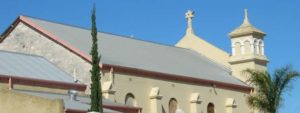 The first Jewish congregation in Western Australia was founded in Fremantle in 1887, when Benjamin Solomon organised the necessary fundraising and construction of the Fremantle Synagogue on the corner of South Terrace and Parry Street. The Reverend Abraham Tobias Boas came to Fremantle from Adelaide to lay the foundation stone of the new building, in 1891. It was opened in 1897, but did not last long as a place of worship because the congregation was absorbed into the Perth Hebrew Congregation in 1907.
The first Jewish congregation in Western Australia was founded in Fremantle in 1887, when Benjamin Solomon organised the necessary fundraising and construction of the Fremantle Synagogue on the corner of South Terrace and Parry Street. The Reverend Abraham Tobias Boas came to Fremantle from Adelaide to lay the foundation stone of the new building, in 1891. It was opened in 1897, but did not last long as a place of worship because the congregation was absorbed into the Perth Hebrew Congregation in 1907.
For the more orthodox Jewish settlers, the more Anglicized services of the Perth Hebrew Congregation had no appeal. They formed the Perth Jewry Association and built a synagogue known as the Palmerston Shule. Possible conflict between the two congregations was avoided thorough the leadership of Perth Jewry’s first minister, Rabbi D. I. Freedman who served in the Perth Hebrew Congregation for 42 years from 1897 up until his death in 1939.
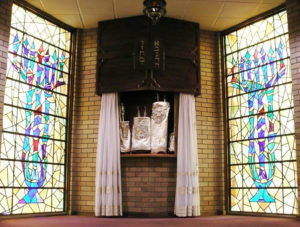 Most of the Jewish settlers came from Eastern Europe both before and after World War I, but a number also arrived from Palestine. A Liberal (Reform) congregation Temple David, was formed in 1952. In 1970 the Jewish community, which numbered about 3,300, was the third largest in Australia. In recent decades Perth’s Jewish community has expanded considerably. According to the 2001 Australian census, 4,871 declared Jews lived in Perth; the actual number is probably more than 6,000. Many were recent migrants from South Africa, for whom Perth was the nearest community in an English-speaking democracy. Perth’s Orthodox synagogue, the Perth Hebrew Congregation, was led by a number of rabbis who were prominent spokesmen for the community, including David Isaac Freedman (1874–1939), Louis Rubin-Sacks (1910–1983), and Shalom Coleman (1918– ). There was an Orthodox day school, Korsunski-Carmel College, established in 1959.
Most of the Jewish settlers came from Eastern Europe both before and after World War I, but a number also arrived from Palestine. A Liberal (Reform) congregation Temple David, was formed in 1952. In 1970 the Jewish community, which numbered about 3,300, was the third largest in Australia. In recent decades Perth’s Jewish community has expanded considerably. According to the 2001 Australian census, 4,871 declared Jews lived in Perth; the actual number is probably more than 6,000. Many were recent migrants from South Africa, for whom Perth was the nearest community in an English-speaking democracy. Perth’s Orthodox synagogue, the Perth Hebrew Congregation, was led by a number of rabbis who were prominent spokesmen for the community, including David Isaac Freedman (1874–1939), Louis Rubin-Sacks (1910–1983), and Shalom Coleman (1918– ). There was an Orthodox day school, Korsunski-Carmel College, established in 1959.
Australia Capital Territory
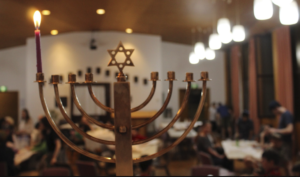 The community was founded in the 1950s and currently has around 200 members. It is located in the centre of Canberra, adjacent to the Parliament triangle. The National Jewish Memorial Centre was opened in 1971. Canberra has a single Jewish community run by an elected Board, which needs to accommodate spiritual and temporal needs across the full spectrum of Jewish diversity. It provides for religious needs through both Orthodox and Progressive services, run in different parts of the Jewish Community Centre. It is also responsible for such activities as adult education, cheder, youth activities, social activities, welfare, and relations with the general community and Jewish organizations outside Canberra.
The community was founded in the 1950s and currently has around 200 members. It is located in the centre of Canberra, adjacent to the Parliament triangle. The National Jewish Memorial Centre was opened in 1971. Canberra has a single Jewish community run by an elected Board, which needs to accommodate spiritual and temporal needs across the full spectrum of Jewish diversity. It provides for religious needs through both Orthodox and Progressive services, run in different parts of the Jewish Community Centre. It is also responsible for such activities as adult education, cheder, youth activities, social activities, welfare, and relations with the general community and Jewish organizations outside Canberra.
Northern Territory
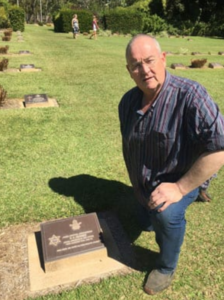 It is believed that there are around 100 Jews in the Northern Territory and among them are academics at Charles Darwin University, experts in the mining industry, doctors, lawyers, dentists and other dental and medical professionals – as well as passing Israelis and tourists. While not a formalised community, they use social media to gather for Rosh Hashanah and the occasional Shabbat. There has always been an informal Jewish presence in the Northern Territory – but never a formal community with a synagogue.
It is believed that there are around 100 Jews in the Northern Territory and among them are academics at Charles Darwin University, experts in the mining industry, doctors, lawyers, dentists and other dental and medical professionals – as well as passing Israelis and tourists. While not a formalised community, they use social media to gather for Rosh Hashanah and the occasional Shabbat. There has always been an informal Jewish presence in the Northern Territory – but never a formal community with a synagogue.
Earlier this year, Litchfield Council approved the development of a small Jewish section at Thorak Regional Cemetery – 20 kilometres south of Darwin. Initially, it has scope for 20 plots with an option of another 20. Previously, when a member of the Jewish community in the Northern Territory passed away, arrangements had to be made to transport the body to one of the Jewish cemeteries in another state.